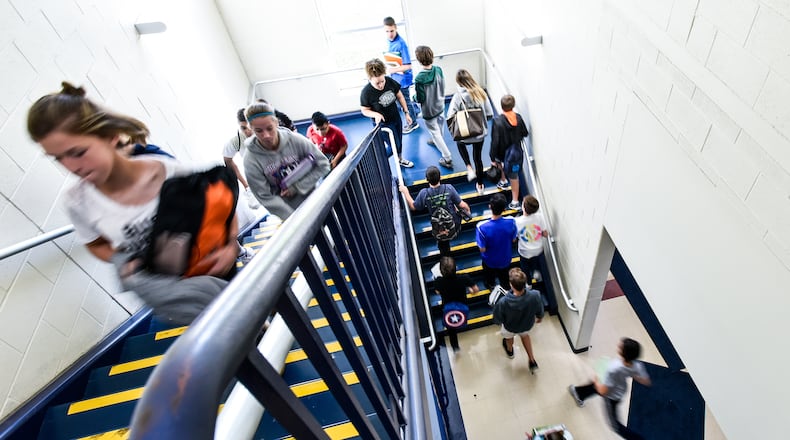A new report from the Centers for Disease Control and Prevention finds teenage girls in America are in free fall. This CDC temperature readout on the well-being of high school students comes at a time when we are losing too many young people to preventable causes, including a mental health crisis that intensified for girls and LGBTQ youth during the pandemic.
The CDC’s Youth Risk Behavior Survey surveyed 17,000 high school students in the fall of 2021. The Atlanta-based agency released its findings earlier this month with a dire warning that teen girls are experiencing record levels of violence, sadness, and suicide risk.
“Across almost all measures of substance use, experiences of violence, mental health, and suicidal thoughts and behaviors, female students are faring more poorly than male students. These differences, and the rates at which female students are reporting such negative experiences, are stark,” states the report.
The survey showed nearly 30% of female students drank alcohol during the past 30 days. Almost 20% experienced sexual violence during the past year and 14% had ever been physically forced to have sex. Rates of poor mental health and suicidal thoughts and behaviors are even higher.
In 2021, almost 3 out of 5 female students experienced persistent feelings of sadness or hopelessness during the past year, double the rate of boys and the highest level reported over the past decade. Nearly 1 in 3 girls said they had considered suicide, up about 60% from a decade ago.
LGBTQ students in the survey experienced the greatest risk factors, with nearly 70% experiencing persistent feelings of sadness or hopelessness during the past year, and more than 50% reporting poor mental health during the past 30 days. Almost 25% attempted suicide during the past year.
The CDC survey adds to a growing body of evidence that young people are not OK. A study published 10 months ago in the JAMA Pediatrics journal sifted through department of health data from 14 states including Georgia. Researchers found Georgia, Indiana, New Jersey, Oklahoma and Virginia experienced an increase in absolute counts of adolescent suicides during the pandemic. Suicides among Georgians ages 10 to 19 rose from the pre-pandemic average of 6% of all suicides statewide to 7.1% during the pandemic.
These findings are not surprising to schools seeing mental health challenges in their classrooms. And, increasingly, schools are being called upon to serve as the first line of defense. The CDC called schools “the gateway to needed services for many young people.”
In a crisis of this proportion, University of Chicago researcher Camille Farrington said, “Schools can’t be the only place or the primary place where we address the well-being and mental health of young people. This will take the entire society’s commitment and resources. That being said, because school is one place most young people are every day, I can’t imagine a response that didn’t involve schools.”
Co-author of “Teaching Adolescents to Become Learners,” Farrington said schools can mitigate the distress, sadness and alienation in students that can cascade into a mental health crisis.
“Young folks take their cues from their settings, including home and school. How they are treated in those spaces and how they feel is how they make sense of ‘who I am,’ ‘what do I have of value’ and ‘how do people see me.’ Our research over a decade has really shown that the most academic gains come when you have academic press and challenge combined with a supportive environment and a connection to folks in the classroom.”
Atlanta’s Midtown High School is trying to ensure its students are supported and connected, creating new opportunities for students to form bonds, including a Saturday school program where teens can interact with teachers and peer tutors or serve as peer tutors.
The school is also holding parent symposiums this month and next on navigating anxiety and depression in adolescents. Midtown High has four counselors but added a school-based therapist. It also just launched a Student Mental Health Advisory Board to better understand the stressors in the lives of teens and whether its programs are helping.
“We are making sure that we are cultivating a space where the mental well-being of all students matters and where we’re not contributing to the stress kids already have in their lives,” said Cheryl Nahmias, who oversees student support programs at Midtown.
Meeting all the rising mental health needs — a capacity many schools are not staffed to do — can be daunting. “But if there is a child sitting in front of you with substantial challenges, as the adult charged with helping that student learn and develop skills to lead a good life, you are going to try to do something,” said Nahmias. “As much as possible, that action should always be evidence-based and have the most impact on the most children possible.”
About the Author
The Latest
Featured



